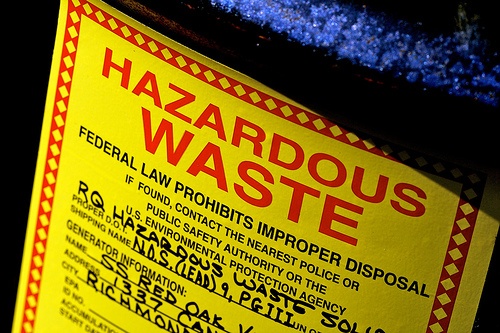Many laws provide for civil – and sometimes even criminal – penalties for noncompliance. New legislation typically sets penalty levels (“XXX dollars per day of violation” for example), at levels intended to provide meaningful deterrence and punishment for noncompliance. But over time, the relative sting of these penalties declines with inflation. To counteract the possibility that less painful penalties reduce incentives for compliance, most U.S. federal agencies are required to make annual “cost of living” adjustments to maximum available civil penalty levels (criminal penalties are not affected).
Read MoreAudit, Compliance and Risk Blog
Federal Agencies Adjusting Civil Penalty Levels for Inflation
Posted by Jon Elliott on Tue, Feb 06, 2024
Tags: EPA, 2020 US Presidential election, Inflation, CPI, Federal Agencies, Penalties, GAO
Federal laws (commonly referred to as RCRA, after the Resource Conservation and Recovery Act of 1976) provide comprehensive management requirements for parties involved in hazardous waste management, from “cradle to grave” covering generators, transporters, and offsite management facilities. Among these many provisions are requirements that “large quantity generators (LQGs)” submit biennial reports to the Environmental Protection Agency (EPA) or delegated states in March of every even-numbered year. March 2024 is the next such deadline, so now is a good time to review biennial report requirements to ensure compliance at qualifying facilities.
Read MoreTags: EPA, RCRA, Hazardous Waste, AHW, LQG
On December 21`, 2023, the Occupational Safety and Health Administration (OSHA) announced a notice of proposed rulemaking (NPRM) to develop an Emergency Response Standard that will update, expand and supersede OSHA’s existing Fire Brigades Standard. The new standard will extend detailed OSHA protections to additional emergency responders, including not just firefighters but also emergency medical service providers and technical search and rescue workers. The rest of this note describes these proposed changes.
Read More
Tags: Health & Safety, OSHA, Fire Prevention, Fire Safety, NPRM
On November 22, the Occupational Safety and Health Administration (OSHA) issued a Safety and Health information Bulletin (SHIB) discussing “safety helmets” as evolved alternatives to traditional hard hats, and offering recommendations for situations where employers should switch. On December 11 the agency announced that it’s following its own advice and replacing its own employees/inspectors hard hats with safety helmets. The rest of this note discusses OSHA provisions for personal protective equipment (PPE) providing head protection, and the rationale and examples of the benefits of upgraded headgear.
Read MoreTags: Health & Safety, OSHA, Safety and Health at Work, workplace safety
The Occupational Safety and Health Administration (OSHA) Region 3 (covering Delaware, Pennsylvania, West Virginia, and the District of Columbia) has renewed a Regional Emphasis Program under which it focuses inspection resources on “High Level Noise.” This announcement provides a useful reminder to employers throughout the US to evaluate occupational noise and the risks of employees’ hearing loss. The remainder of this note summarizes OSHA’s Occupational Noise Standard for General industry (separate requirements cover construction).
Read MoreTags: OSHA, workplace safety, PPE, PEL
OSHA reminds employers about duty to keep young workers safe
Posted by Jon Elliott on Tue, Dec 19, 2023
The Occupational Safety and Health Administration (OSHA) provides a “Young Workers - You have rights!” webpage on its website, compiling regulatory and practical information for employers and workers. As we approach the annual spike in youth employment during the end-of-year Holidays, this provides a timely reminder to focus on the needs and rights of young people in workplaces. The webpage targets information as follows:
- Young Workers
- Employers
- Parents and Educators
- Real Stories
- Hazards
- Resources
The remainder of this note summarizes these materials, focusing on information useful to employers.
Read MoreTags: Health & Safety, OSHA, Safety and Health at Work, workplace safety
California adopts general requirements for workplace violence prevention
Posted by Jon Elliott on Fri, Dec 15, 2023
On September 30, 2023, California’s governor Gavin Newsom signed Senate Bill (SB) 553, which expands the state’s workplace violence prevention (WVP) requirements, adding duties and rights for most employers in the state. Most importantly, SB 553 requires all non-exempt employers in the state to create WVP plans. These expanded requirements will be administered by California’s Division of Occupational Safety and Health (DOSH, but generally referred to as “Cal/OSHA”), which already administers WVP planning requirements for healthcare employers (which I wrote about HERE), and has been working on a general rule (I wrote about the latest draft HERE). The remainder of this note discusses SB 553, which takes effect on January 1, 2024 but remains subject to further rulemakings.
Read MoreTags: Workplace violence, California, DOSH, WVP, IIPP
On October 7, 2023, California’s governor Gavin Newsom signed two important bills expanding climate-related reporting requirements for targeted organizations doing business in the state – SB 253 (Wiener) (Climate Corporate Data Accountability Act) and SB 261 (Stern). These requirements will be administered by the California Air Resources Board (ARB), which already includes most state greenhouse gas (GHG) regulatory requirements within its extensive air quality and climate authority (centered on the Global Warming Solutions Act of 2006 (AB 32). The remainder of these note discusses these new requirements.
Read MoreTags: Environmental, Greenhouse Gas, ghg, California, Environment, Environmental Policy
WorkSafeBC reminds employer to prevent slips, trips and falls
Posted by Jon Elliott on Tue, Dec 05, 2023
On October 24, 2023, WorkSafeBC, British Columbia’s provincial occupational health and safety (OHS) regulator and workers’ compensation overseer, issued a reminder to employers to address the hazards of workplace slips, trips and falls. The reminder began with a recitation that approximately 20 percent of all workplace injuries in the province relate to slips, trips, and falls. The agency also reported that “in the past six years, almost 41,000 workers in B.C. suffered slip-trip-and-fall injuries, including fractures, sprains, and dislocations.” The agency notice follows these statistics with reminders of what employers can and should do to reduce the likelihood and severity of these injuries. The remainder of this note summarizes this information.`
Read MoreTags: Health & Safety, Safety and Health at Work, workplace safety, Injury, OHS
Deadlocked Supreme Court of Canada allows restriction of owner-employer contracting out OHS responsibilities to contractors
Posted by Jon Elliott on Thu, Nov 30, 2023
Throughout North America, Canadian occupational health and safety (OHS) agencies and US occupational safety and health (OSH) agencies administer and enforce worker protection laws. These laws require extensive employer efforts to protect employees – although in some situations it’s unclear which employer(s) are responsible for which workers. These complex situations include construction sites where one or more landowners or property occupiers hire one or more contractors to performer work. In November 2023 the Supreme Court of Canada deadlocked four-to-three-to-one in a case involving liability for a municipal “owner” that had attempted to contract all responsibilities (and potential liabilities) to the contractor (“constructor”) hired to repair a municipal water main, after a worksite death. (R. v. Greater Sudbury (City)) Because the Supreme Court deadlocked, the Ontario Court of Appeal decision finding the city liable becomes the law of the case, overturning many years of practice in which owners contracted-out OHS responsibilities to their constructors.
Read MoreTags: OSHA, Supreme Court, workplace safety, Canada, Ontario Court, Ontario








